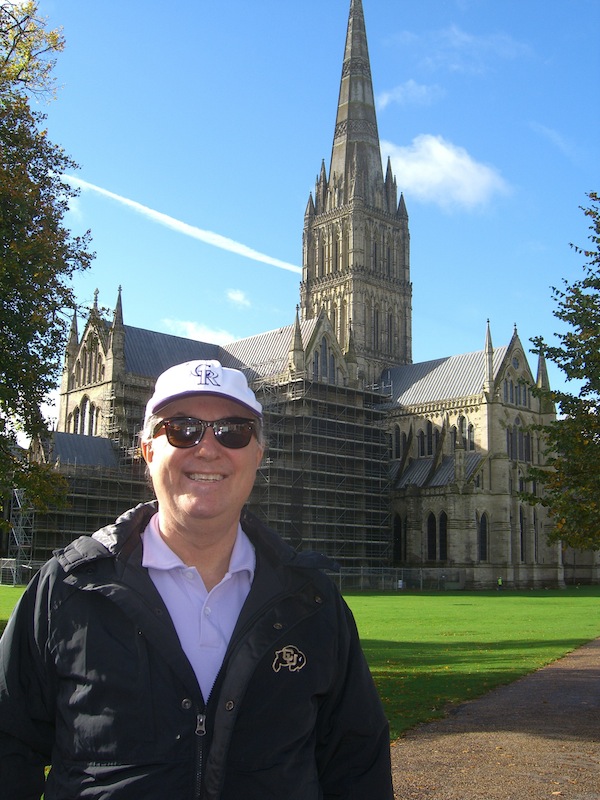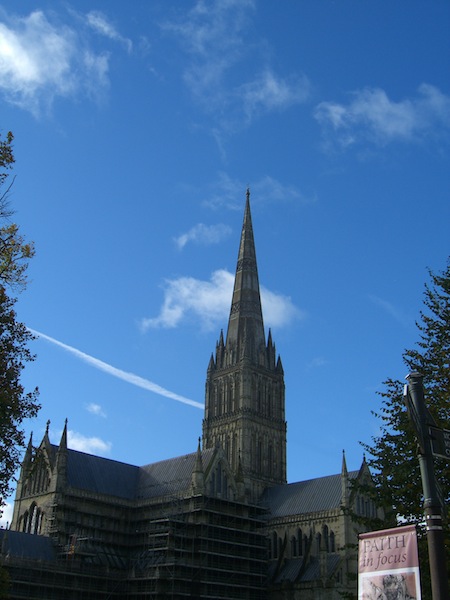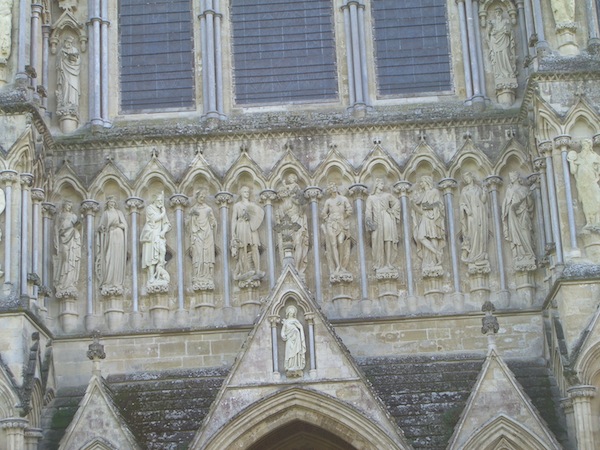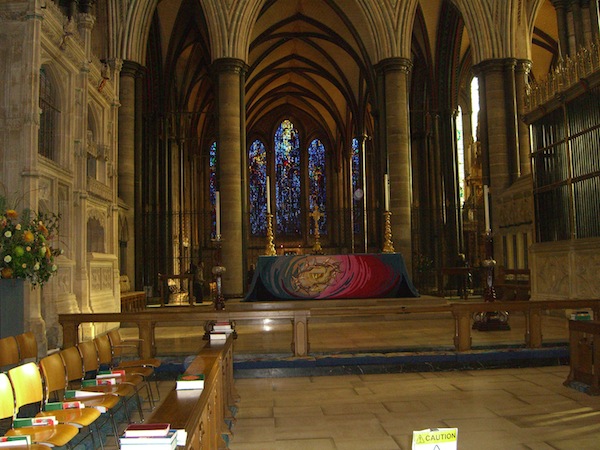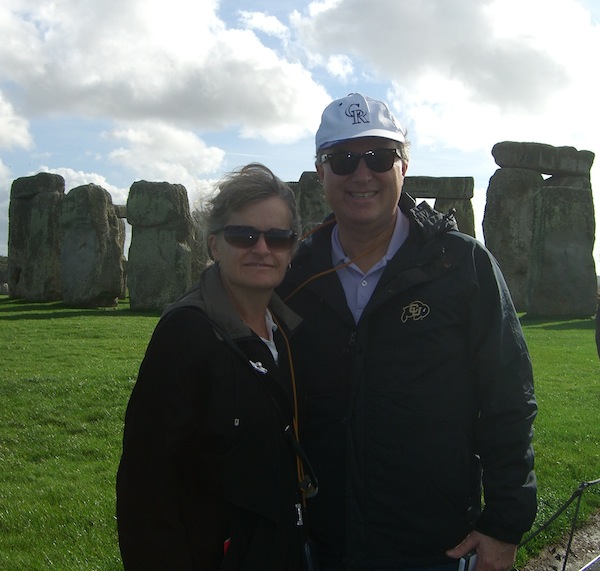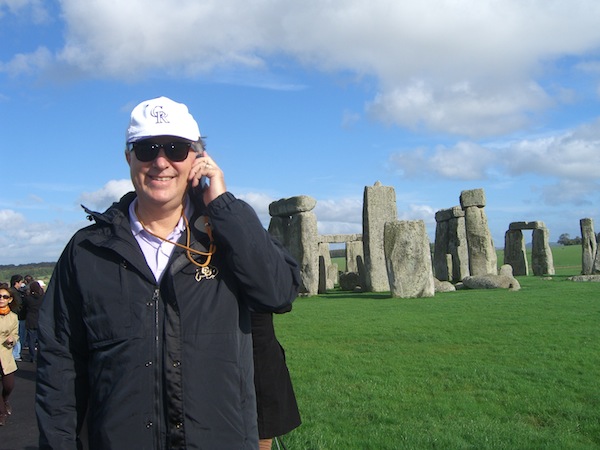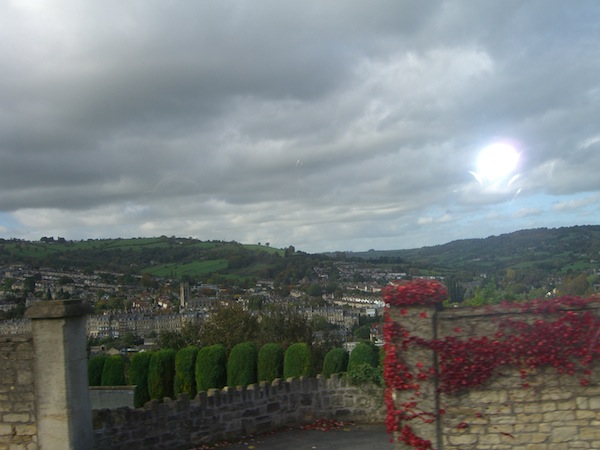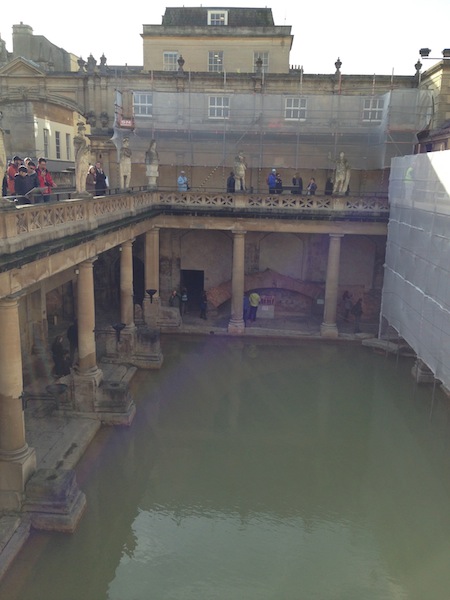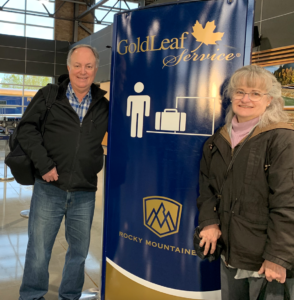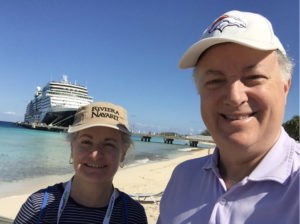Today we ventured outside of the London city limits to see some of the sights in the English countryside.
Our first stop was Salisbury. Here I am in front of the impressive cathedral, with the tallest church spire in the United Kingdom (404 feet). My favorite dead British architect, Christopher Wren whom I mentioned yesterday, was said to be upset that the spire was not perfectly straight, and failed in several attempts to fix it. Our guide said the spire has a 1.5 degree tilt to the right. Lighten up, Chris! The spire looked good to me, and was straighter than my Italian architect ancestors produced with the Leaning Tower of Pisa.
It was a beautiful Wednesday to see the British countryside. The cathedral was striking against the clear blue sky. We would not have any rain today.
Our guide said this was the only English cathedral with statues of catholic saints adorning the facade. It seems when King Henry VIII was excommunicated from the Catholic church and founded the Anglican church, he had the saint statues removed from all the cathedrals in England. The bishop of Salisbury, though, was on good terms with King Henry and the statues at the Salisbury cathedral were allowed to stay.
Equally impressive was the interior of the cathedral, which still hosts worship services. In an adjoining nook one of the original 13 copies of the Magna Carta was displayed. Volunteers at the church were positioned throughout and they were very helpful in explaining the history of this amazing structure.
Queue the Chariots of Fire music! We saw a group of school children, dressed in their uniforms, running through the streets of Salisbury this day.
A 20 minute drive away was the site of the Stonehenge monument, which dates back to 2500 BC.
We were allowed to circle the monument on a walking path. I was surprised at the grassy field surrounding Stonehenge.
We were given audio wands where we would enter the number of different viewpoints of the monument and given a history of Stonehenge. The purpose of Stonehenge remains a mystery. To me it seemed it was used to track the movement of the sun and the earth’s seasons, as an aid to farming. The Stonehenge site is being renovated. We saw a new visitor’s center under construction and our guide said in the future visitors will take a train around the monument rather than have a walking trail. I am glad we were able to visit when we could still walk the grounds.
As our bus weaved its way through the beautiful British countryside we approached the town of Bath for our final stop.
Here we took another “audio wand” tour of the ancient Roman baths built over a natural spring. The tour was very well done and really gave a sense of what the baths were like in Roman times.
We had ventured far from our London base to get to Bath, so we had a three hour bus ride to return to our hotel. It was a great day of touring. Tomorrow we visit some of the famous London sights we missed on day 1.

